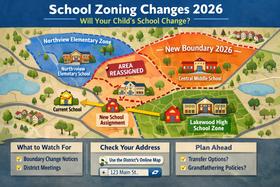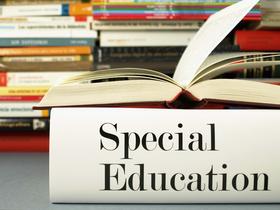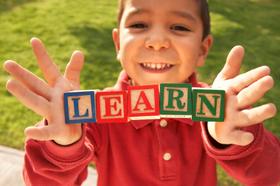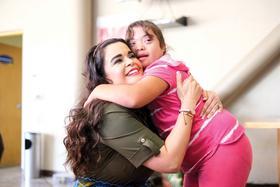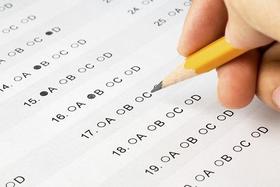Introduction: The Reality of Learning Differences
Learning differences and disabilities are more common than many people realize.
- According to the National Center for Education Statistics, about 14% of all public school students in the United States receive special education services.
- This means that in a typical classroom of 30 students, at least four will likely have some form of learning difference.
Facing Reality
When parents discover their child has a learning difference or disability, it can be an emotional rollercoaster.
- Initial reactions often include shock, denial, and even self-pity.
- It's natural to feel overwhelmed, but it's crucial not to dwell on these emotions.
- Your child needs you now more than ever, and taking prompt action is key to ensuring they receive the support they need to thrive.
I know this firsthand, as my eldest adopted son was thirteen years old when he came to live with us.
- He read at a Grade 2 level.
- We didn't panic. We acknowledged his issue and took him to a professional who recommended a special needs school.
- After 4 semesters of primarily one-on-one instruction, my son could read at his grade level.
- It's a scary, worrying experience, but with all the excellent resources available, a favorable outcome is entirely possible.
Understanding Learning Disabilities
Learning disabilities are neurologically based processing problems that can interfere with learning basic skills, such as reading, writing, or math. They can impede higher-level skills like organization, time planning, abstract reasoning, and attention.
Common types of learning disabilities include:
- Dyslexia: Affects reading and related language-based processing skills
- Dyscalculia: Affects a person's ability to understand numbers and learn math facts
- Dysgraphia: Affects a person's handwriting ability and fine motor skills
- Auditory and Visual Processing Disorders: Sensory disabilities in which a person has difficulty understanding language despite normal hearing and vision
It's important to note that learning disabilities are not indicative of intelligence.
- Many individuals with learning disabilities have average or above-average intelligence.
- The challenge lies in the way their brains process certain types of information.
This video offers an overview of learning differences.
Autism Spectrum Disorder (ASD)
Autism is a complex developmental disorder that affects approximately 1 in 54 children in the United States, according to the Centers for Disease Control and Prevention (CDC).
It's characterized by:
- Difficulties in social interaction
- Challenges in verbal and non-verbal communication
- Restricted and repetitive behaviors or interests
The term "spectrum" reflects the wide variation in challenges and strengths possessed by each person with autism. Some individuals with ASD may require significant support in their daily lives, while others may live entirely independently.
Early signs of autism can include:
- Lack of or delay in spoken language
- Repetitive use of language and/or motor mannerisms (e.g., hand-flapping, twirling objects)
- Little or no eye contact
- Lack of interest in peer relationships
- Lack of spontaneous or make-believe play
- Persistent fixation on parts of objects
Attention-Deficit/Hyperactivity Disorder (ADHD)
ADHD is one of the most common neurodevelopmental disorders of childhood, affecting approximately 9.4% of children aged 2-17 years old in the United States, according to a 2016 study by the CDC.
ADHD is characterized by persistent patterns of:
- Inattention: Difficulty staying focused, easily distracted
- Hyperactivity: Excessive movement, restlessness
- Impulsivity: Hasty actions without thought of consequences
There are three main subtypes of ADHD:
- Predominantly Inattentive Presentation
- Predominantly Hyperactive-Impulsive Presentation
- Combined Presentation
It's crucial to understand that ADHD is not a result of laziness, lack of discipline, or bad parenting. It's a complex neurological condition that affects the brain's executive functions.
A 24-year-old musician in the National Guard shared their ADHD success story on Reddit. This individual struggled in school during their younger years, believing they were "too stupid for school." However, they found success in more active jobs like working in special education and delivery driving. The turning point came when they started a federal office job and struggled to perform like their colleagues. This led them to seek help from a psychiatrist, resulting in an ADHD diagnosis. With proper treatment, they were able to secure their dream job in HR. This story emphasizes how ADHD can present differently in various environments and the importance of seeking professional help. It also showcases how proper diagnosis and treatment can lead to significant improvements in one's personal and professional life. Source: r/ADHD
Dyslexia: A Closer Look
Dyslexia is perhaps one of the most misunderstood learning differences.
- It affects about 20% of the population and represents 80–90% of all those with learning disabilities.
- Contrary to popular belief, dyslexia is not just about reversing letters or reading backwards.
Dyslexia is a specific learning disability that affects a person's ability to read, write, and spell. It's characterized by difficulties with:
- Accurate and fluent word recognition
- Poor spelling and decoding abilities
- Phonological awareness (the ability to recognize and manipulate the sounds in spoken language)
Signs of dyslexia can appear as early as preschool age:
- Difficulty learning simple rhymes
- Trouble following directions
- Struggle with remembering the names of letters
As children enter school, they may:
- Reverse letters when reading (like confusing 'b' and 'd')
- Have trouble sounding out new words
- Struggle with spelling even common words
Dyslexia is not related to intelligence.
- Many dyslexic individuals are highly creative and have strong problem-solving skills.
- With proper support and intervention, children with dyslexia can learn to read and write effectively.
- However, they may continue to read more slowly than their peers.
Claire Landry's experience with dyslexia illustrates the challenges and triumphs many individuals face. As a child, Claire struggled with reading and writing, feeling like she was "unintentionally playing a game of scrabble 24/7." Despite her parents' efforts to help her improve through various activities, Claire fell behind her peers in school. After being diagnosed with dyslexia in third grade, Claire faced challenges in both private and public schools. She learned to advocate for herself and benefited from working with supportive resource teachers. Claire's story highlights the importance of proper diagnosis, accommodations, and self-advocacy skills for students with dyslexia. Now in 11th grade, Claire has learned to manage her dyslexia effectively. She participates in various sports and performs well academically, demonstrating that with the right support and strategies, individuals with dyslexia can thrive. Source: Dyslexia Stories: Claire Landry
Diagnosis and Evaluation: The First Step Towards Support
Early diagnosis and intervention are crucial for all these conditions. The evaluation process typically involves:
- Gathering information from parents, teachers, and caregivers
- Observing the child's behavior
- Conducting standardized assessments
Professionals qualified to diagnose these conditions include:
- Pediatricians
- Child psychologists
- Psychiatrists
- Neuropsychologists
- Educational psychologists
A comprehensive evaluation might include:
- IQ tests
- Academic achievement tests
- Social and emotional assessments
- Speech and language evaluations
- Occupational therapy evaluations
Individualized Education Programs (IEPs): A Roadmap for Success
An IEP is a legally binding document developed for public school children who need special education. It's created through a team effort and reviewed at least once a year. Key components of an IEP include:
- Current performance levels
- Annual goals
- Special education and related services to be provided
- Accommodations and modifications
- How progress will be measured
Parents are crucial members of the IEP team and have the right to be involved in all decisions regarding their child's education.
This video explains IEPs.
Support Strategies for Parents and Educators
- Create a structured environment: Children with special needs often thrive on routine and predictability. Establish clear schedules and expectations.
- Provide individualized support: Recognize that each child is unique. What works for one may not work for another.
- Use positive reinforcement: Celebrate small accomplishments to boost confidence and motivation. This can be as simple as verbal praise or a small reward system.
- Maintain effective communication: Establish a strong support network involving parents, teachers, and specialists. Regular meetings and open lines of communication are crucial.
- Keep things simple: Break tasks into manageable steps and keep projects concise to avoid overwhelming the child. This strategy, known as "chunking," can make learning more accessible.
The Role of Technology in Special Education
Technology has revolutionized special education. Some beneficial tools include:
- Text-to-speech and speech-to-text software
- Graphic organizers and mind-mapping tools
- Assistive listening devices
- Communication boards and apps for non-verbal students
- Virtual reality for social skills training
These tools can level the playing field for students with special needs, allowing them to access curriculum and express their knowledge in ways that weren't possible before.
Co-teaching and Inclusive Education: A New Frontier
Co-teaching, where a general education teacher and a special education teacher work together in the same classroom, is gaining traction. Benefits include:
- Increased attention for all students
- Exposure to diverse teaching styles
- Reduced stigma for students with special needs
- Opportunities for peer learning and support
This approach aligns with the principle of least restrictive environment (LRE), which states that students with disabilities should be educated alongside non-disabled peers to the greatest extent appropriate.
Conclusion: Empowering Through Understanding and Action
Supporting children with special needs is a journey that requires patience, understanding, and a collaborative approach. By staying informed about various conditions, utilizing appropriate support strategies, and leveraging available resources, parents and educators can help these children reach their full potential.
Remember, a diagnosis is not a limitation—it's a roadmap for support. With the right interventions and a positive, proactive approach, children with special needs can achieve remarkable things. They may learn differently, but they are capable of learning, growing, and contributing to society in meaningful ways.
As we continue to advance our understanding of learning differences and special needs, we open up new possibilities for these children. By embracing their unique strengths and supporting their challenges, we're not just helping them succeed academically—we're empowering them to lead fulfilling lives and make exceptional contributions to the world.
Questions? Contact us on Facebook and Instagram. @publicschoolreview
#SpecialNeedsEducation #LearningDisabilities #AutismAwareness #ADHDSupport #IEPGuidance #InclusiveEducation



